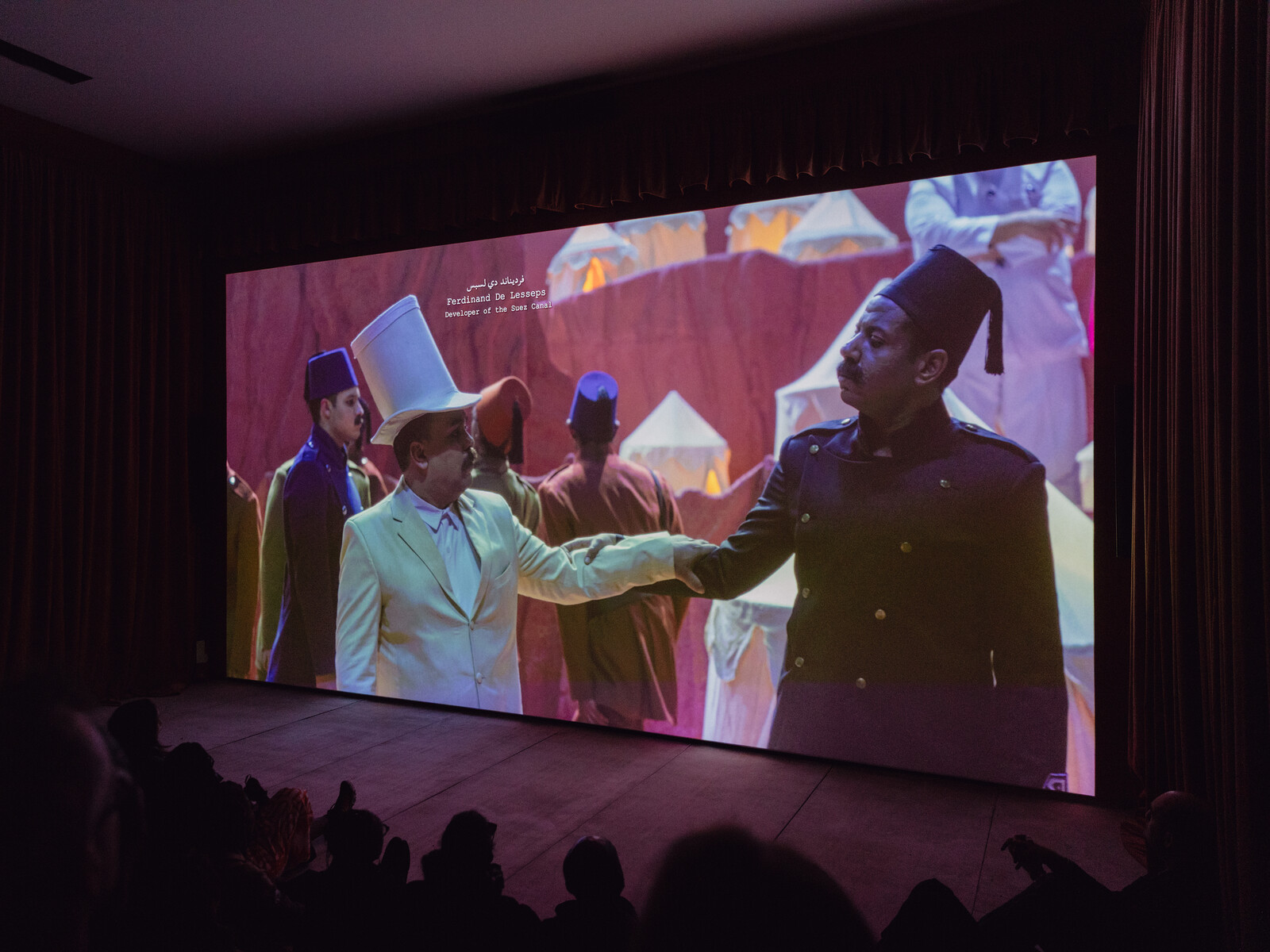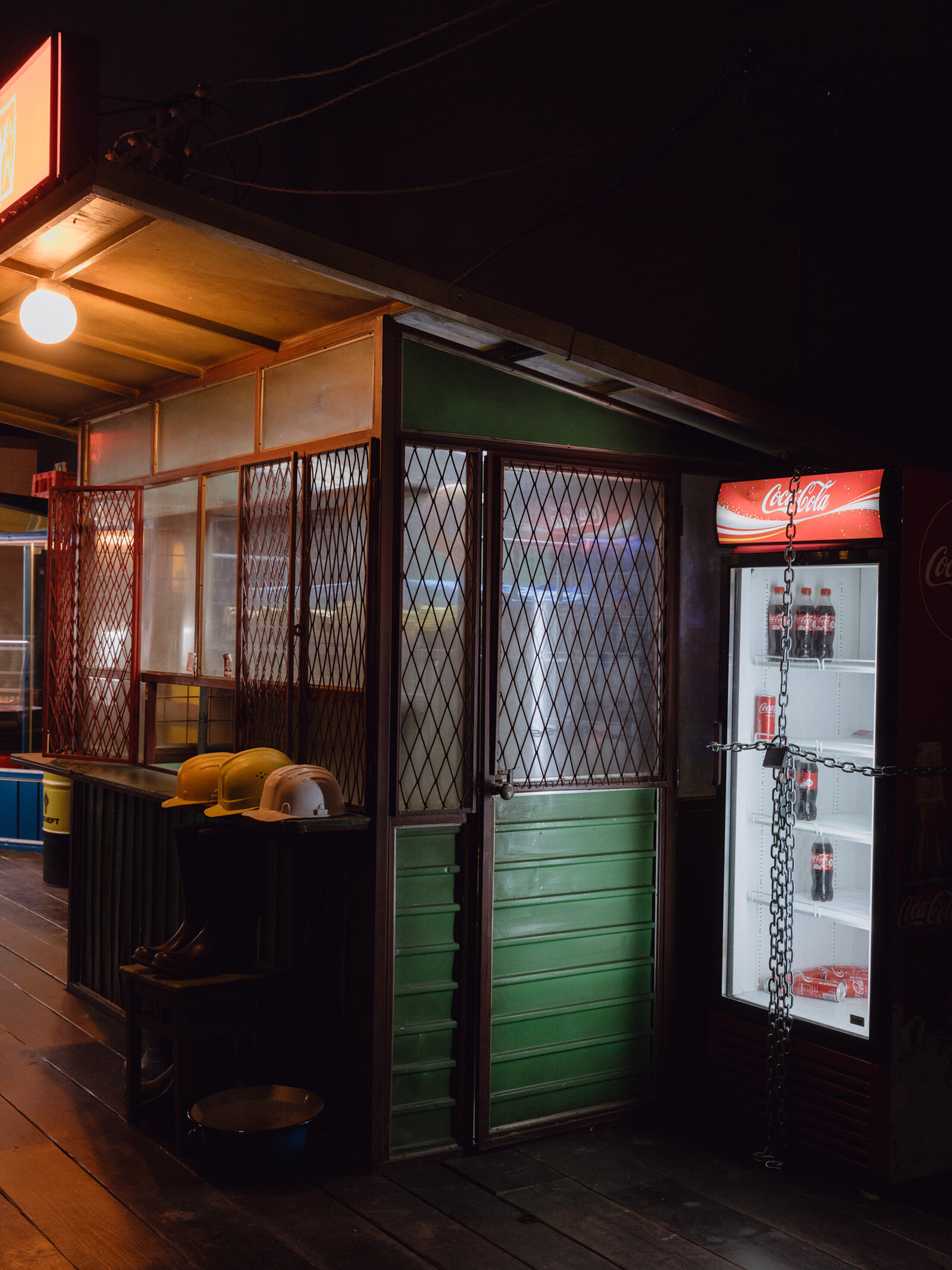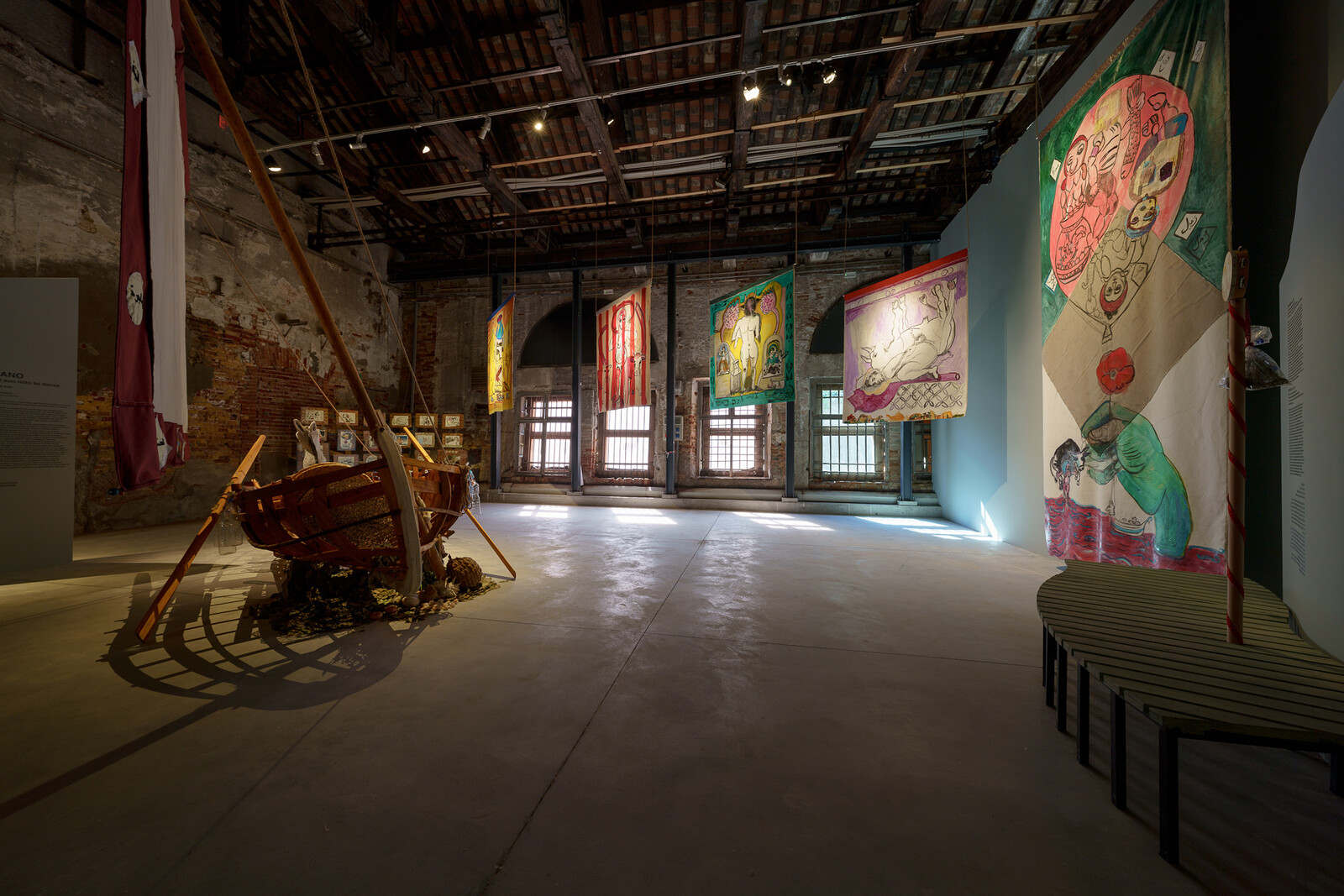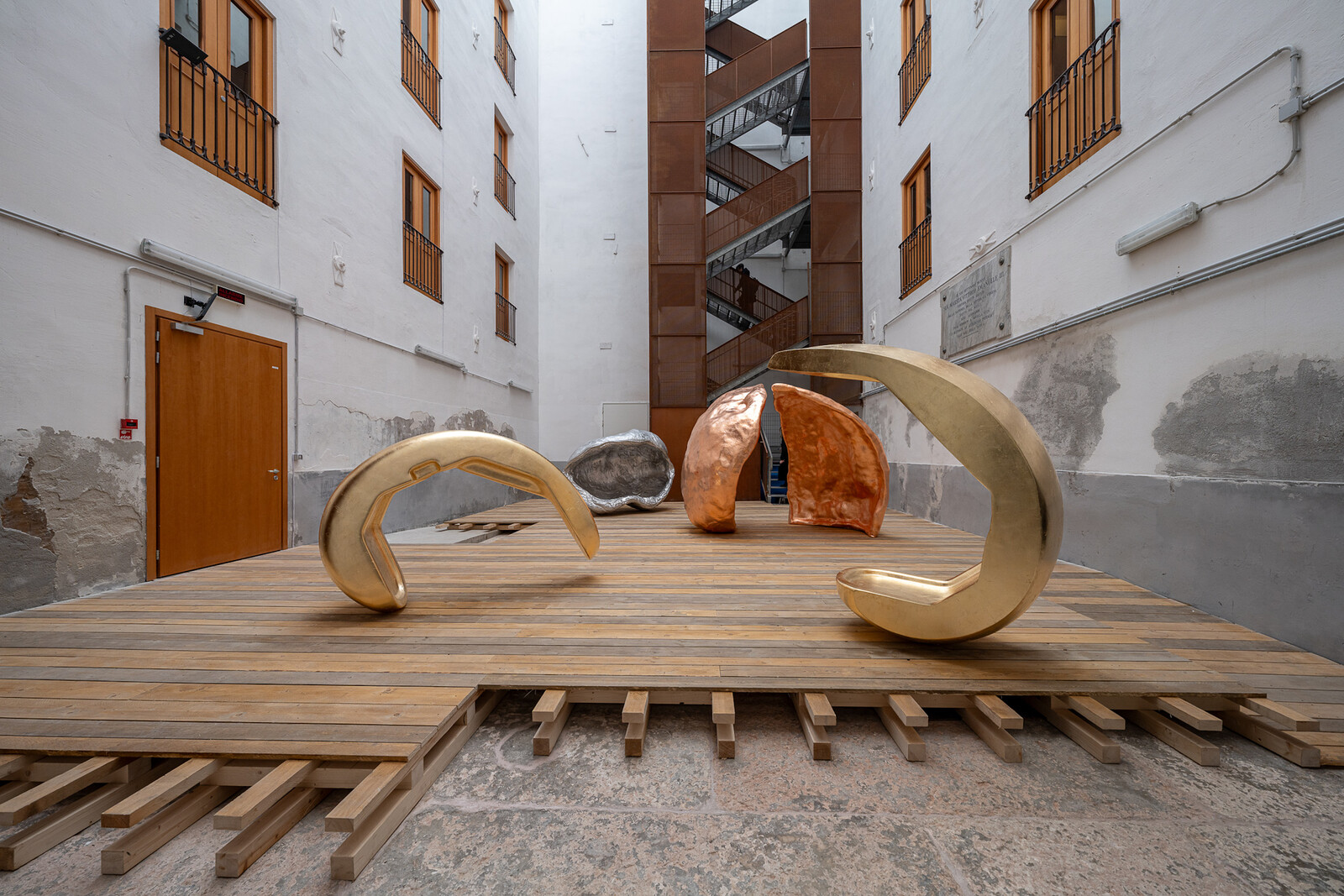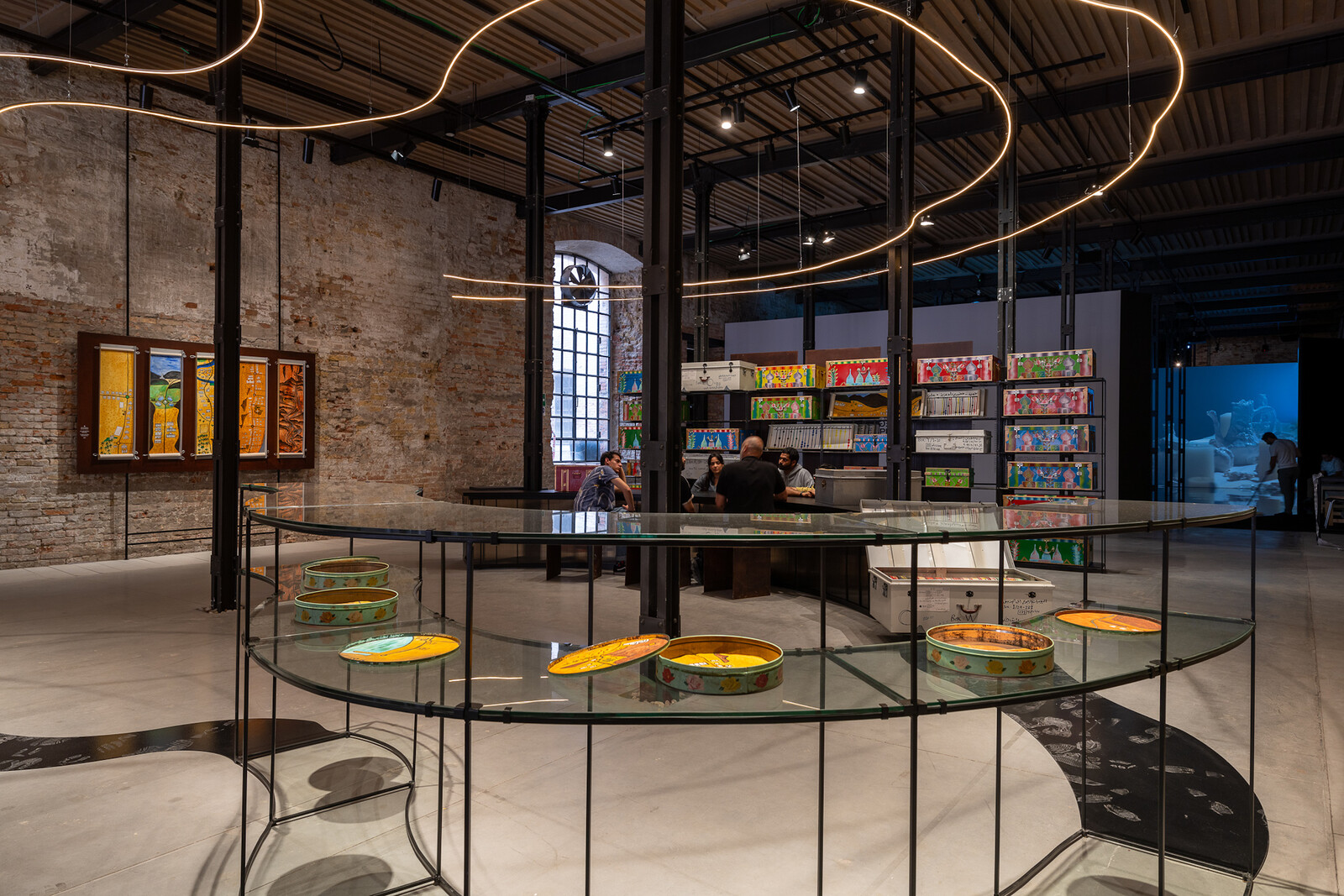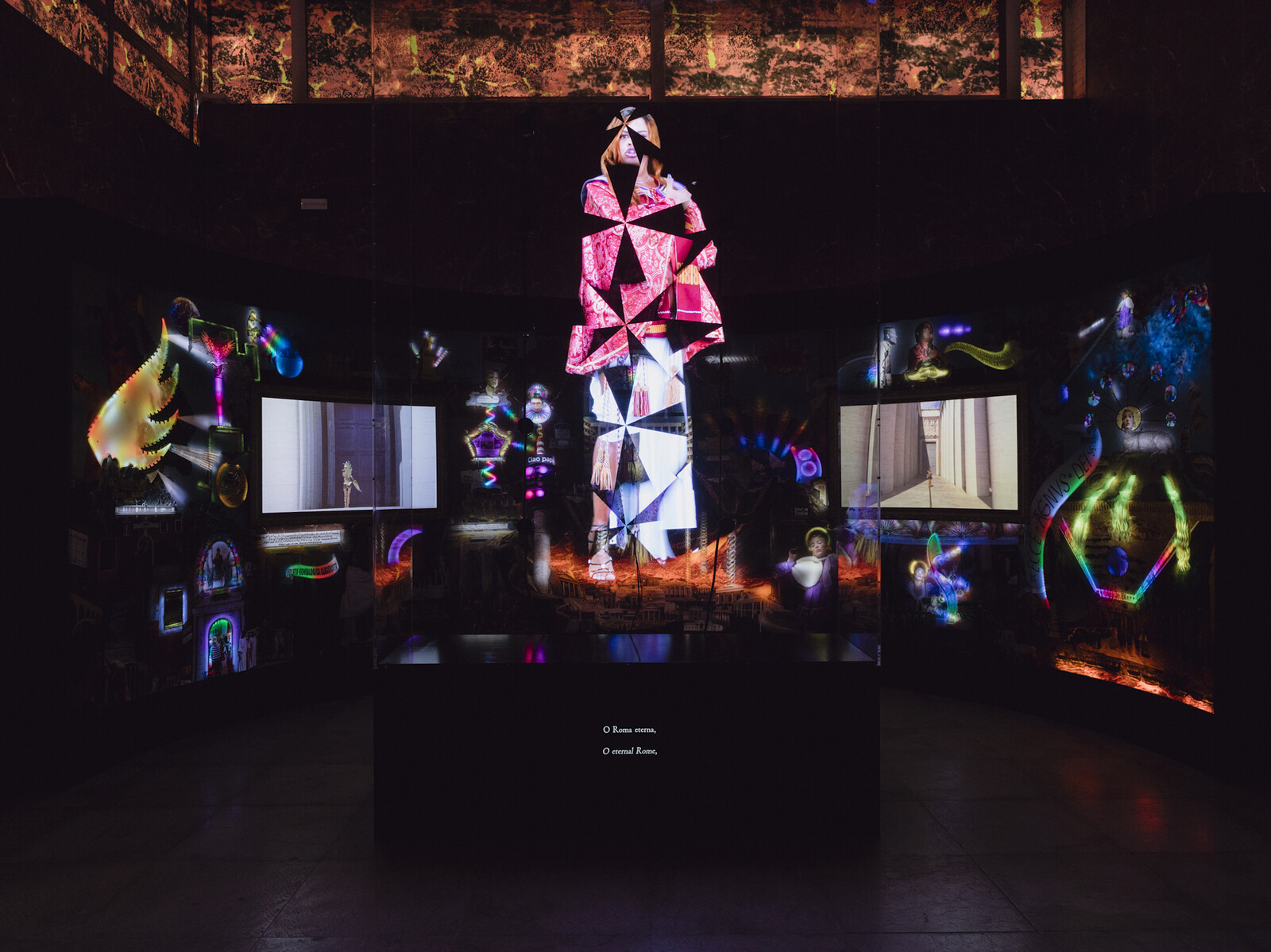April 20–November 24, 2024
In contrast to ruangrupa’s challenge to basic capitalist imperatives at Documenta 15—notably time as a measure of productive activity, individual authorship, and curatorial labor—the international exhibition of the 60th Venice Biennale, curated by Adriano Pedrosa, failed to match an inclusive selection of artists with a comparable reimagination of the structural framing, critique, or tools of the format in which they are exhibited. By importing the Global South to Venice on terms set by the Global North, it leaves the task of a radical intellectual response to the overarching theme of “Foreigners Everywhere” to the pavilions, collateral shows, and pro-Palestine protests that surround it.
One throughline among the national pavilions was an emphasis on how the past is asserting itself on the present, a resonant theme as conflicts in Palestine and Ukraine, and tensions between the west and China, reinscribe power dynamics rooted in the nineteenth and twentieth centuries. At the Egyptian Pavilion, Wael Shawky presents a forty-nine-minute musical theater film Drama 1882 (2024) about the Urabi Revolution. Divided into eight acts, the film installation focuses on pivotal moments in the “scramble for Africa” that, by the end of World War I, had redrawn the map of Africa and the Middle East. Watching the piece, it is hard to not to make parallels between the repression and economic mismanagement under the Khedives which led to the country’s first major nationalist movement and the contemporary regime of President Sisi, with its freefalling economy and imprisonment of reporters and poets such as Alaa Abd El-Fattah.1
Shawky’s script takes creative license with the facts—painting the revolution’s “Franz Ferdinand moment” as a plot between British and Maltese consular representatives—but its simple score and rhythmic choreography offers an elegant reminder of how histories define communities through their transformation into myth. Taking a similar approach to the critique of colonial intervention, Mounira Al Solh’s “A Dance with her Myth” at the Lebanese Pavilion inverts the story of the rape of Europa with an installation of bright gestural paintings, drawings, and faux-naif ceramic masks to imagine what she calls in the wall text “a destiny freed from gods.” At the Serbian Pavilion, Aleksandar Denić’s “Exposition Coloniale” is an immersive disaster Disneyland installation of maybe post-apocalyptic, maybe Soviet-era film set vignettes. The piece piece is particularly suggestive given Serbia’s increasingly autocratic leadership and rejection of Kosovar sovereignty—The Republic of Kosovo Pavilion won a special recognition from the jury for Doruntina Kastrati’s installation exploring labor conditions in the transition to a free-market system after the 1999 war.
The title of “Don’t Miss The Cue,” by Aziza Kadyri and Qizlar Collective at the Uzbek Pavilion, links a theater curtain installation with the Uzbek government’s recent focus on contemporary art as a diplomatic tool on the world stage. This presentation by nine Uzbek women artists combines traditional crafts with emerging technologies to reflect on issues of identity and domesticity. Loosely reminiscent of Martha Rosler’s Semiotics of the Kitchen (1975), Qizlar Collective’s five videos present portraits of women wrestling Gen Z steppe identity: international influences, political realities, and local traditions. “Sites of Memory, Sites of Amnesia” by Abdullah Al Saadi at the UAE Pavilion similarly emphasizes memory, landscape, and poetry in the formation of identity. Framed around his bicycle trips through the Arabian Peninsula, the exhibition gathers painted rocks, hand-drawn maps, and lyrical drawings. Most are stored behind a counter in brightly colored lunch tins which docent performers open and explain to viewers, grounding the project in personal connection.
The means by which colonial conquest continues to shape contemporary realities were explored by Peruvian-Spanish artist Sandra Gamarra Heshiki’s powerful “Pinacoteca Migrante / Migrant Art Gallery” at the Spanish Pavilion. Gamarra Heshiki has divided the pavilion into six sections—titles included “Mestiza Masks” and “Cabinet of Enlightened Racism”—representing thematic critical investigations interweaving sociology, anthropology, politics, art history, and botany. She overlays quotes from artists and writers like Wassily Kandinsky and Paul B. Preciado, handcrafts, and masks onto objects ranging from racist missionary piggy banks to her own paintings. Gamarra Heshiki’s “museum” riffs on the exoticism of romantic landscape, casta painting, botanical studies, and colonial-era portraiture in its reflections on the legacy of colonialism’s extractivist attitudes to land and people. This is a distinctly South American critique of how the narrative tropes of colonial projects evolved into today’s capitalist and neoliberal ideas around value and labor.
At the Swiss Pavilion, Guerreiro do Divino Amor presents campy video collages which play on the founding myth of ancient Rome and Mount Olympus, here recast in honor of the Swiss cultural agency as “Mount Helvetia,” sending up Switzerland as global shorthand for order and profit. With a slick planetarium video to introduce his pantheon and a hologram of an opera-singing, Brazilian trans wolf-mother goddess, the artist skewers the appropriation of mythological symbols by states and corporations. “Super Superior Civilizations” was one of the few pavilions to overtly reference the relationships between states and corporations, including allusions to banking and Nestlé’s actions in the developing world.
Complicating dominant narratives with other pasts and perspectives—as Okwui Enwezor and Massimiliano Gioni did in previous editions of the Biennale—forces a reckoning with the values and institutions that structure both international exhibitions and the societies that produce them. The monumental scale of stacks of certificates recording deaths of Indigenous people in state custody in Archie Moore’s installation at the Australian Pavilion emphasize that representation isn’t enough. Whereas Ruangrupa offered collectivity and “wasting” time as a way to resist the capitalist imperative to be productive, “Foreigners Everywhere” does not sufficiently address the structures or systems that incentivize the marginalization and exploitation of the communities it claims to highlight.
This is the second in a series of responses to the 60th Venice Biennale by e-flux Criticism. Jörg Heiser’s review of the German, Austrian, and Polish Pavilions will be published tomorrow.
Eve Marie Troutt Powell, Colonized Colonizers: Egyptian Nationalists and the Issue of the Sudan, 1875 to 1919 (Doctoral dissertation, Harvard University History and MES, 1995).


